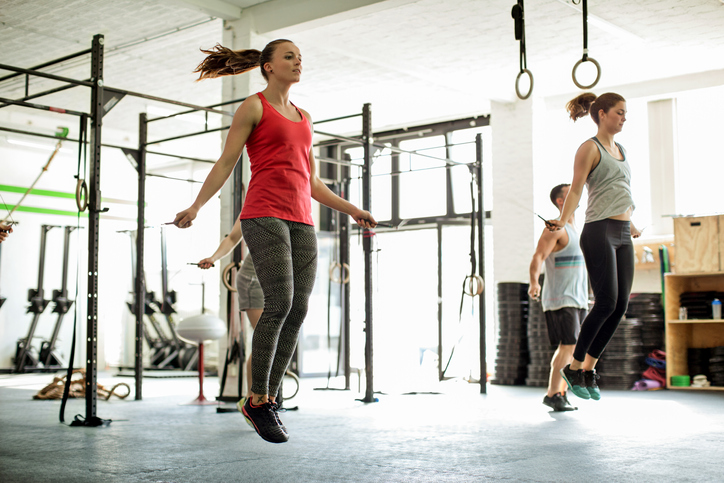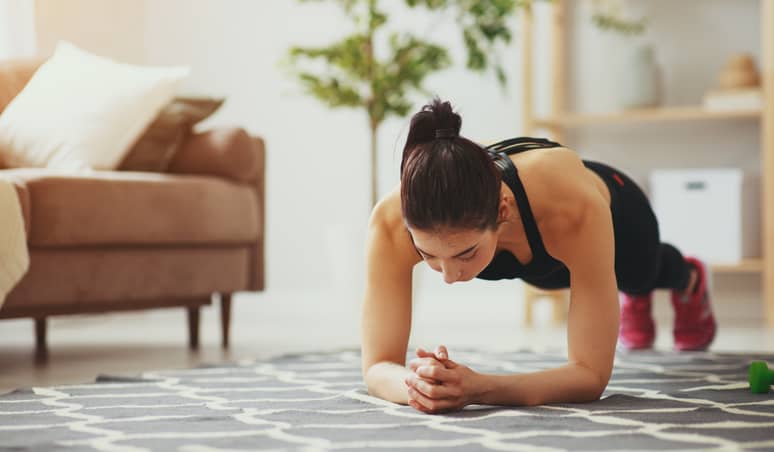Exercise boredom is extremely common – research suggests that 50% of people who start an exercise programme give it up within 6 months.
If you’re looking for something to kickstart your workout routine, circuit training might be the answer. Read on to find out if this dynamic form of exercise could help you beat workout boredom.
What is circuit training?
Circuit training is a high-intensity form of exercise that works to improve fitness and strength at the same time. It does this by targeting all areas of the body – the core, arms, legs, glutes and back.
An average circuit-training session can be between 30 minutes and 1 hour long and involves moving quickly through a circuit of 8 to 10 different exercise stations. A set of exercises at each station ranges from 10 to 25 repetitions, lasting between 30 seconds and 3 minutes – with little to no rest between stations.

What does a circuit-training session involve?
Circuit training can be done at home, on your own at the gym or in a circuit-training class.
Circuits vary widely as the possible combinations of exercises are infinite. However, each circuit will use a mix of cardio- and weight-based exercises that target different areas, for a full-body workout.
Circuit-training exercises include:
Weight-based exercises
- push-ups
- planks
- lunges
- sit-ups
- crunches
- squats
- dumbbell exercises
- kettlebell exercises
- band exercises
Cardio-based exercises
- running
- jogging on the spot
- cycling
- skipping
- running up and down stairs
- mountain climbers
- side-to-side hops
- jumping jacks
Tip: You don’t need equipment, like weights, to try circuit training at home – bodyweight exercises such as lunges, squats and crunches can be just as effective.

The benefits of circuit training
The change in focus on different muscle groups from exercise to exercise means there’s no need to rest between sets or stations. The continuous movement and frequent repetitions work to raise your heart rate, boosting cardiovascular fitness and muscle strength at the same time.
Unlike many other types of exercise, circuit training acts like an all-in-one, as each session can provide a number of physical benefits at once, including:
- weight loss
- improved flexibility
- increased strength and power
- more muscle tone
- boosted endurance
On average, a 68kg person will burn around 308 calories at a moderate intensity, and 573 calories at a vigorous intensity, in a 1-hour circuit-training session.
Along with the physical benefits of circuit training, there’s no end to the number of different workouts you can put together – you’ll almost certainly never get bored.

Is circuit training for you?
If you’re generally healthy, circuit training is a great way to get fit or lose weight (when combined with healthy eating).
Circuit training can be very intense, so it’s best to check with your doctor first if you have heart problems.
If you have arthritis, you might need to stick to low-impact circuit-training exercises to avoid putting unnecessary pressure on your joints.
If you have a knee or back injury, circuit training might not be right for you. Talk to your doctor to discuss whether it’s safe for you to try it.
Key points
- circuit training is a full-body workout that combines cardio and weight exercises
- it can be done at home, in the gym or as a class
- benefits include weight loss, increased muscle tone, improved strength and flexibility and boosted endurance
- you may need to avoid circuit training if you have a back or knee injury
- talk to your doctor first if you have heart problems
Did you know, you can use the Healthily app to track your activity? Once you've downloaded the app, go to ‘My account’ then 'My trackers' and choose 'Activity levels'.
Need more tips on how to get active? Try out our 28-day in-app get fitter plan for all the latest hacks on how to work more exercise into your daily routine. Currently available on iOS only.


